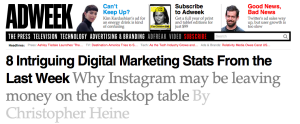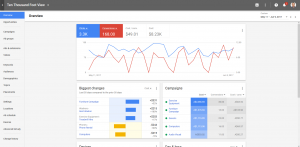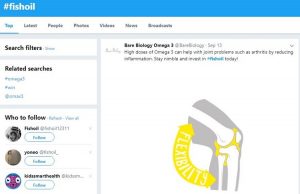Animated GIFs have been picking up in popularity among email marketers. In an interview with Direct Marketing News, Matt Caldwell, VP of creative for at Yesmail Interactive, said that this tool works best when it helps to better explain a product that the marketer is trying to create or as a way to stand out. Caldwell pointed out that it is important for the files to be no larger than 125K, so that there are no technical problems with the image.
hese multi-frame images can create a more animated email experience.
When it comes to incorporating Graphic Interchange Formats (GIFs), most marketers immediately jump to social, and they’re like:

But when it comes to including GIFs in email, some are like:

Believe it or not, these multi-frame animated images can be a powerful storytelling and engagement tool for email marketers. Matt Caldwell, VP of creative for email marketing platform provider Yesmail Interactive, spoke with Direct Marketing News about how marketers can tie GIFs into their email marketing and deliver a livelier experience.
Why should marketers consider using GIFs?
Because they’re easy for marketers to make and readers to enjoy.
“The biggest benefit of GIFs is [that] they load, they run, there’s no pressing play, [and] there’s no waiting for buffering,” Caldwell says. “For the most part, they’re pretty straight forward and simple.”
When should I use GIFs?
There are two primary scenarios in which marketers should incorporate GIFs:
1) They’re trying to explain a product or service: GIFs are a great way to show multiple views of a product, such as apparel, or demonstrate how a product works, Caldwell says. For instance, when technology company HP introduced the HP Slate—a device that functioned as both a laptop and a tablet—Yesmail Interactive included GIFs in the brand’s emails to show consumers using the product in both states, he explains.

2) They want to draw attention to an event or reference: On average, email marketers have consumers’ attention for about six seconds, Caldwell says. However, GIFs can be an effective way to prolong that focus. Caldwell says that retailer may include a GIF, for example, to emphasize that it’s having a major sale. Pop culture and humor references are also strong use cases.
Is there anything that I should be aware of before including GIFs in my emails?
A couple things:
1) Size matters: 125K should be the maximum file size for an email GIF, Caldwell says. GIFs won’t animate until all of its frames are loaded, he explains. Therefore, using larger files sizes can result in sticky situations. The GIF could freeze on the first frame—or worse, not show anything at all. Because there’s no loading status bar, Caldwell says, consumers have no idea how much longer they’ll have to wait to see the whole animated image.
“By that time, the user has already deleted [the email] and moved on,” he warns.
To better prepare for these awkward encounters, Caldwell advises marketers to have the first frame of the GIF be able to stand alone while the rest of its frames load.
2) It’s about the content: Exploding fireworks and bouncing “sale” letters can be fun; however, Caldwell says that marketers should focus on the content more than the actual animation:
“Just making something jiggle is not really a great use of animated GIFs.”
When determining whether a GIF is necessary, he says, marketers should ask themselves the following questions: Does it explain a product or service better or make the email standout more?
Get it?

(434)







